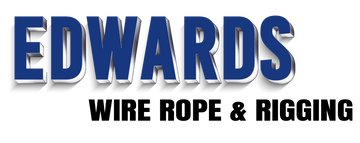Rigging equipment plays a vital role in lifting and securing loads in industrial and commercial construction. Regular inspection and maintenance are crucial to ensure the safety, reliability, and longevity of the equipment. This guide provides detailed steps for inspecting and maintaining rigging equipment.
1. Visual Inspection
Conduct a visual inspection to identify any obvious signs of wear and damage:
- Wire Ropes: Check for broken wires, corrosion, and kinks.
- Slings: Inspect for fraying, cuts, and abrasions. Our Synthetic Slings are designed to withstand harsh conditions.
- Hooks and Shackles: Look for deformation, cracks, and wear.
2. Functional Testing
Test the functionality of the rigging equipment to ensure it operates smoothly:
- Load Test: Apply a test load to verify the equipment's capacity and performance.
- Movement Check: Ensure smooth operation of moving parts, such as hoists and pulleys.
3. Lubrication and Cleaning
Regular lubrication and cleaning help maintain the equipment's performance and prevent corrosion:
- Lubrication: Use appropriate lubricants for wire ropes, chains, and other moving parts. Our Wire Rope Lubricants enhance durability and performance.
- Cleaning: Remove dirt, grease, and contaminants that can cause abrasion and corrosion.
4. Dimensional Checks
Perform dimensional checks to ensure the equipment meets the required specifications:
- Wire Rope Diameter: Measure the diameter to detect any elongation or reduction.
- Shackle Pin Diameter: Ensure the pin diameter is within acceptable limits.
5. Record Keeping
Maintain detailed records of inspections, maintenance activities, and any incidents of wear or damage. This documentation helps track the condition of the equipment and plan for timely replacements.
6. Replacement Criteria
Establish criteria for replacing rigging equipment based on industry standards and manufacturer recommendations. Replace any equipment showing signs of significant wear, damage, or performance issues.
Conclusion
Regular inspection and maintenance are essential to ensure the safety and reliability of rigging equipment. By conducting visual inspections, functional testing, lubrication, cleaning, dimensional checks, and maintaining detailed records, professionals in industrial and commercial construction can maximize the lifespan and performance of their rigging equipment.

